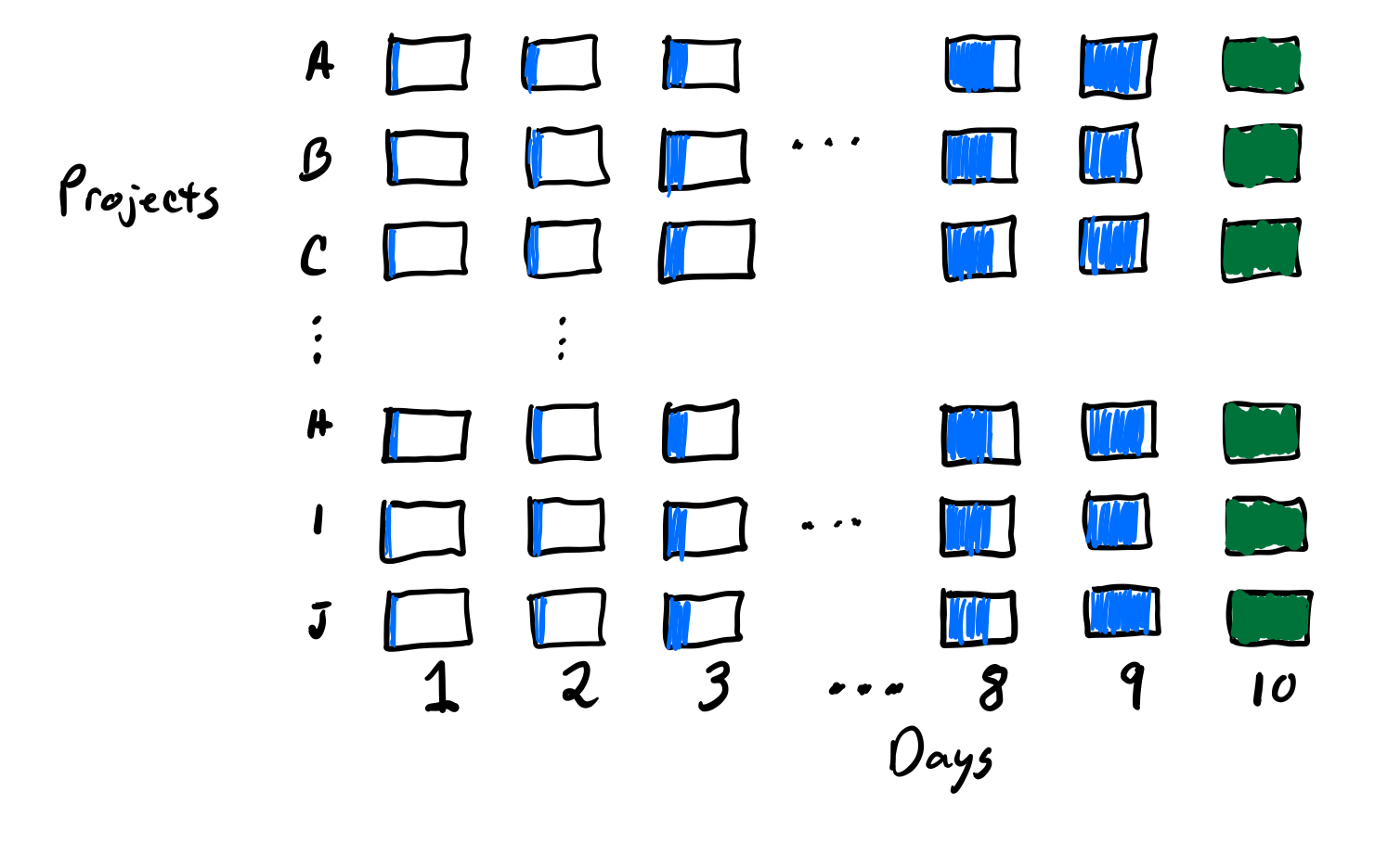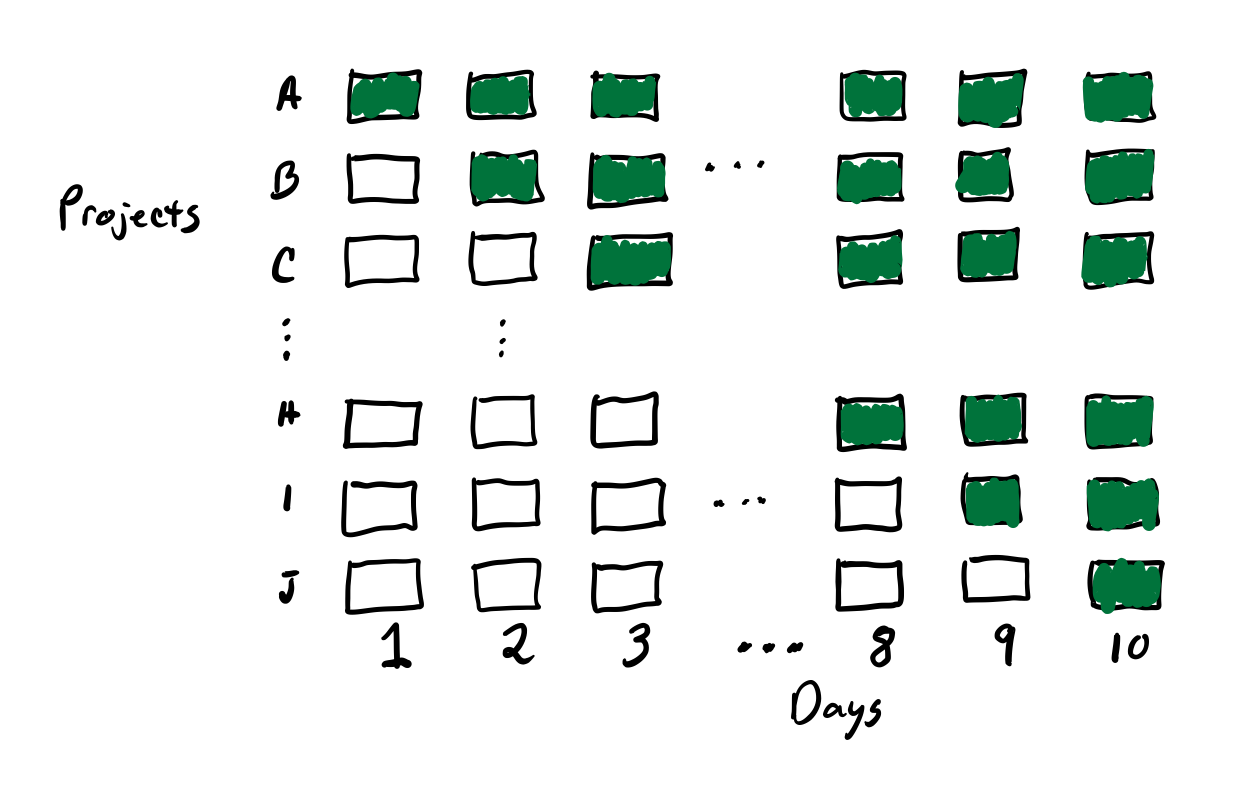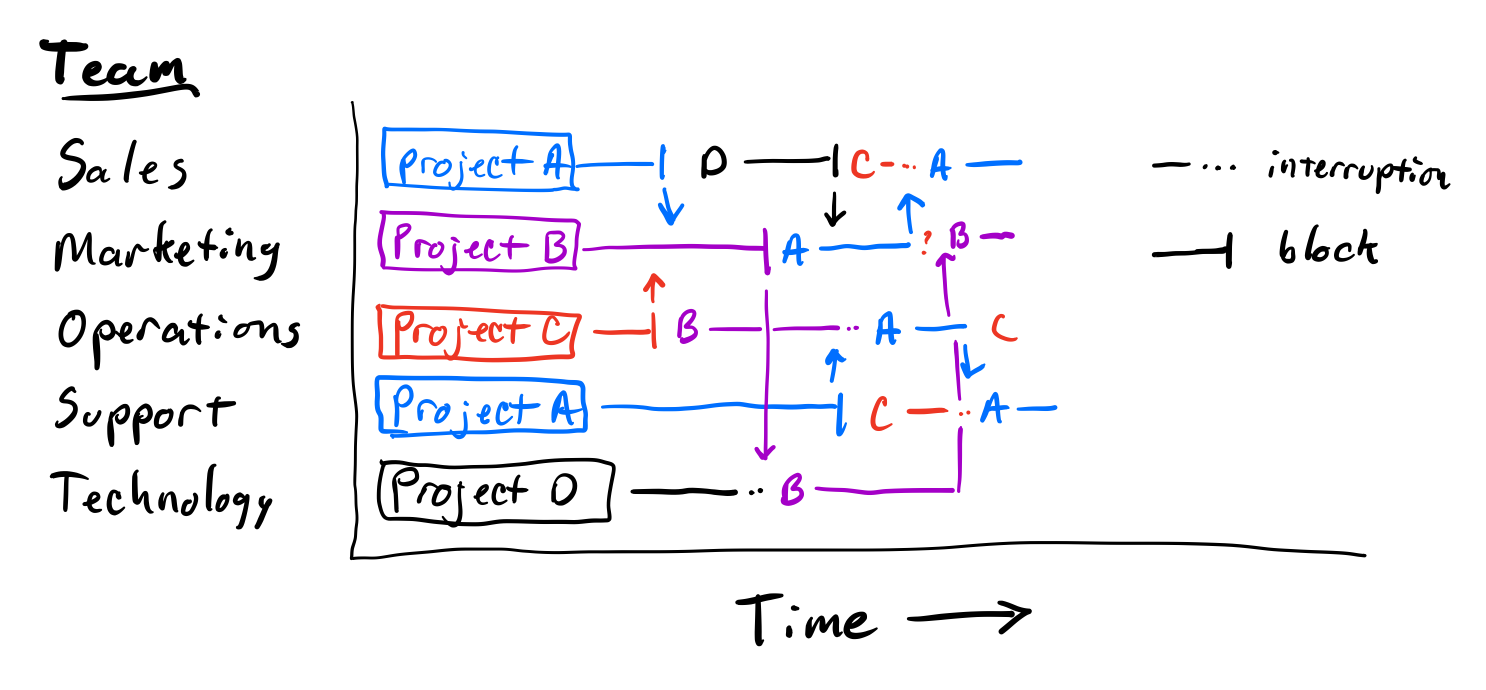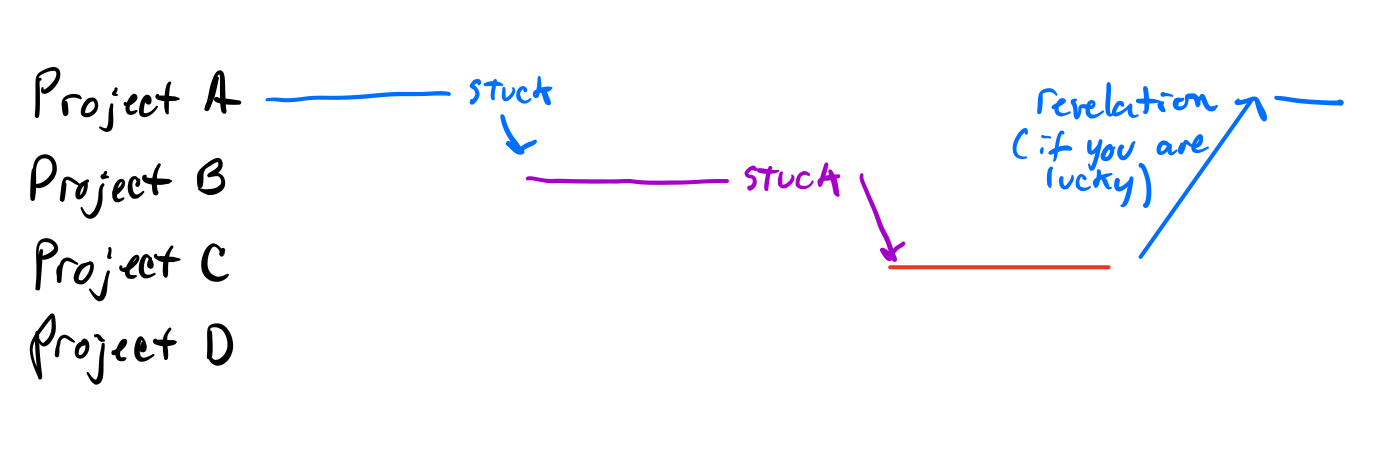I work for Pearl Certification. We’re a small team that is passionate about improving the performance of residential buildings in order to improve people’s lives and reduce environmental impacts and carbon emissions.
We’re smart, passionate people, driven to make a meaningful impact. We also have a problem. Our label for this problem is “we’re trying to do too much.” The audience for the following memo is internal, but it’s posted here in hopes you might find it useful if you are also “trying to do too much”.
Doing too much is easy to identify and hard to fix. I’m going to walk through some of the problems that “trying to do too much” creates and present the single best tool I know for addressing the affliction: limiting the concurrency of work. You’ll often see this as “Limit Work In Progress (WIP)”.
The problems associated with “trying to do too much” include: delayed delivery of value, poor organizational alignment, poor prioritization, and high switching costs.
Delayed Delivery of Value
For the purposes of this discussion, let’s say there are 10 things that we want to accomplish, and each thing takes 1 work day to deliver, and delivers 1 “unit of value” to the organization. Let’s further assume there is no switching cost between projects — a poor assumption that we’ll attack later, but we’ll allow it for now. Whether we do one project a day, or work on all 10 projects concurrently, the result is the same, right? After 10 days, we’re delivering 10 units of value for the organization.
That’s true, but let’s look at the interim while the work is being done. In the full concurrency case, all 10 projects start providing their value at the end of the 10th day. In the no concurrency case, project A starts delivering value at the end of day 1. Project B starts delivering value at the end of day 2, and so on.


At the end of the 11th day, full concurrency has delivered 10 units of value to the organization. No concurrency has delivered 55 units of value (10+9+8…+3+2+1). While the difference becomes small once a long time has elapsed after project delivery, most projects take more than a day’s worth of work to deliver making this effect even more pronounced.
If we want to deliver value to the organization, we must do a small number of things and get them done before moving to the next set of things.
Poor Organizational Alignment
If the organization is trying to get 10 things done concurrently, coordination becomes a challenge. At any given time any particular team may be blocked by work that’s waiting to be provided by another team, may be blocking another team, or may have their work interrupted by a request from another team.
Limiting WIP doesn’t solve this problem. Projects will always have cross-team dependencies and work will always take time to complete. But limiting WIP reduces the problem. Fewer concurrent projects means fewer concurrent cross-team requests and it means that it’s more likely that the team receiving the cross-team request is already working on the relevant project.

Exceptional project/program management can mitigate this problem as well by lining up project allocation in accordance with departmental work capacity, but that can be costly additional overhead and even the best PMs can’t predict every cross-team dependency.
Poor Prioritization
If we are “trying to do too much” it’s likely a symptom of poor prioritization. Unfortunately, it’s a symptom that exacerbates the disease; each makes the other worse. It’s simply not possible that all of the things that we’re trying to do will produce the exact same value for the organization.
If we have one thing in progress, and we get stuck on it, we have to find a way to get ourselves unstuck.
If we have multiple things in progress and we get stuck on one of them, we can hop over and work on one of the other things. Sometimes, this is useful as we can process our stuck item subconsciously. Often, though, we end up doing lower priority work because it’s in front of us, instead of doing the hard work to get higher priority work done.

As we established above, only complete work delivers value for the organization.
Limiting WIP acts as a forcing function for prioritization. If I can only work on a small number or projects, I have to try to pick the best projects to work on.
Limiting WIP also acts as a forcing function for completion. If I can’t start something new until I’ve finished what’s on my plate, I have to finish what’s on my plate.
Switching Costs
Humans like to think we’re good at multitasking. We aren’t. This article from Wrike accumulates lots of good resources on the topic. One of my favorite cartoon observations of this for programming is here. Regardless, it’s true for all creative work. Good creative work requires focus. Cal Newport’s Deep Work is an excellent exploration of the importance of making the space to deliver value based on limiting distractions.
It can take more than 25 minutes to resume a task after being interrupted. — Ian Haynes
Research has demonstrated that that switching from one task to the next takes a serious toll on productivity. Multitaskers have more trouble tuning out distractions than people who focus on one task at a time. Also, doing so many different things at once can actually impair cognitive ability. — Kendra Cherry
By definition, the more things that we have going on concurrently, the greater the temptation to multi-task. But it’s bad for us, and bad for the quality of the work we’re trying to deliver.
Smart Limits
Ideally, we would have a WIP limit of 1. We’d pick up a task and work on it until completion and pick up another one.
However, we live in a world where we often need others to help us deliver a work product. And sometimes, we really do need to let something simmer on the back burner before that revelation appears. There’s no single, magic number (that I know of) for the right number of concurrent projects for an organization or an individual. Whatever the right number is, it’s small!
Saying ‘No’, to the tempting, but ‘wrong,’ work is important.
People think focus means saying yes to the thing you’ve got to focus on. But that’s not what it means at all. It means saying no to the hundred other good ideas that there are. — Steve Jobs
Limiting WIP helps make that process easier, though. It’s about sequencing the work so that important work gets done sooner and starts delivering value to the organization. If we’re limiting the things we work on now, and we’re prioritizing well when it comes time to bring in new work, then we will have automatically “said ‘no’” to all of the other good ideas!
Summary
“Trying to do too much” hamstrings organizational productivity. It delays delivery of value, causes interruptions, and represents poor alignment and prioritization. It’s bad for our mental health and even for the value we’re trying to produce.
Fortunately, the solution is a simple one, if not an easy one: Limit the number of things that we’re trying to do concurrently. It can become our superpower.
Originally published on Medium.com